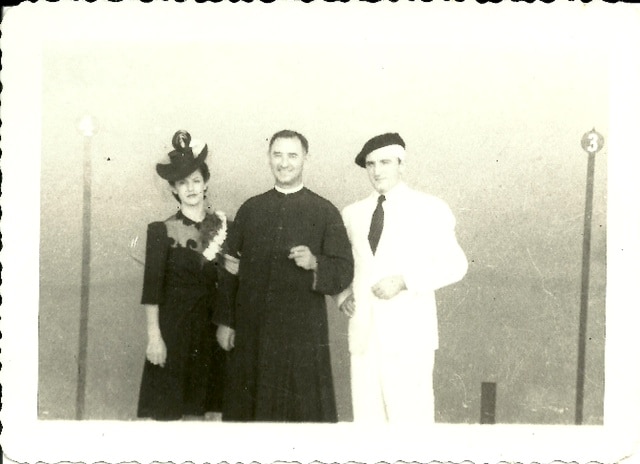They say an amazing story is just the antechamber to an even more amazing story. The other day, we posted one of those entries we just really enjoy writing (and which we really hope you enjoy reading!). It was about Extraordinary Basque Friends: From Cantinflas’ Pelotaria to Hemingway’s Abertzale Priest. There, we shared the amazing story that went from Cantinflas to Hemigway, from Mexico to Havana, full of pelotaris, abertzale priests, actors, and writers.
One of the many references we found about this came from a book by a Russian author, Yuriy Paporov, who told the stories and adventures Ernest Hemingway had while in Cuba. The book covers all sorts of Basques in Havana and all of Cuba, especially on the pelotaris who were “doing the Americas”: an abertzale priest from Mundaka who’d had to flee to exile for being a Republican, to escape the criminal Francoist insurgents.
While going over the book’s stories of the pelotaris who were friends with the author who spent so much of his time throughout his life with Basques, we found a reference to an interview he did in 1945 for the magazine Pelota. In it, he was asked what his strongest impression had been while watching one of his favorite sports, jai-alai. He replied by telling a series of extraordinary events starring two of his friends, Guillermo “El Monarca” Amuchástegui and Julián “Tarzán” Ibarluzea Gerrikabeitia:

— “What has been your strongest impression of jai-alai?”
— The ball strike Julián Ibarlucea receieved here in Havana. All my life, I’ve seen people with mortal wounds. Ibarlucea’s case is the manifestation of such virility and calmness that I can’t even dream of. That night, I was at the court. Guillermo had the bad luck of hitting Julián with the ball in the head. The sound was exaxctly the same was if the ball had hit the front wall, but at the same time it was frozen, lethal. Ibarlucea was my friend. I flew to the infirmary in a such a frenzy that I might have been the one injured. And when I saw Julián, I was surprised by his calmness and focus. He received me as if nothing terrible had happened.
—”Hemingway en Cuba” by Yuriy Paporov
What we never could have imagined is that Julián Ibarluzea was a relative of a friend of ours, and that when we talked about this story with him, he told us this one, and also promised to send us a photo of his wedding with Jesusa Mallakiza Legarra, held at the Havana Frontón (possibly at the Legendary Palacio de los Gritos). The priest officiating the ceremony was Andrés Unzáin, who was called the Red Priest by Spanish fascists and their acolytes for his defense of freedom and democracy.
We were even more surprised to find the pelotari got married with a bandange on his head, a consequence of that terrible strike narrated in Paporov’s book, which left such an impression on Hemingway, more due to the reaction of the pelotari who received it than to the strike itself, however strong it may have been.
So ends a new chapter in this story of coincidences and relationships that this tiny Land of the Basques has to tell, stretching from Mexico City to Havana, but not stopping there anymore: now it reaches the patio at the Jesuits in Bilbao (the oddest thing is that it took them that long to appear in a story about Basques), where our Basque friend told us that his aunt and uncle were some of the stars of this amazing story of Basques in the world.

Last Updated on Dec 20, 2020 by About Basque Country





























